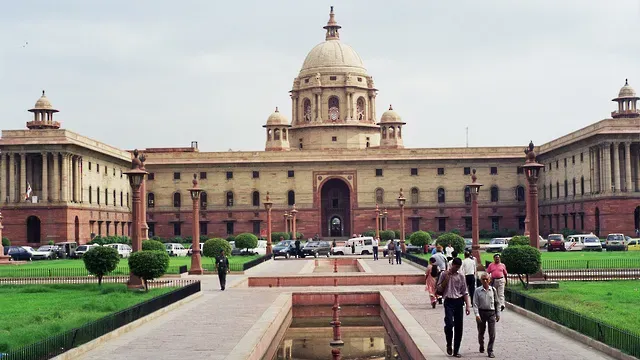Lights On Briefing: Reliance net zero plans, record heat in Pakistan and more
What you need to know to start the week

Happy Monday and welcome to today’s Lights On, a newsletter that brings you the key stories and exclusive intel on energy and climate change in South Asia.
In case you missed it, check out my two part series on the role of fossil fuels in the energy transition and the different - and at times opposing - schools of thought when it comes to phasing them down.
If you enjoy my work, please consider supporting this newsletter with a paid membership:
India
Reliance gets to work on that net zero target
Last year, I wrote about Indian oil and telecom multinational Reliance’s plan to achieve carbon neutrality by 2035. Over the past two weeks, the giant has revealed more details about how it intends to realise the goal. At the 44th AGM meeting, chairman Mukesh Ambani announced an investment of 750 billion rupees (over $10 billion) in clean energy development to ‘establish and enable’ 100 GW of solar energy by 2030, a feat that will include ramping up Indian manufacturing of both panels and storage. Hydrogen will be another area of investment, to help decarbonise the chemical and fertiliser sectors. This week, Reliance is following up with a series of high profile hires to help deliver on its chairman’s promise.
Coal giant goes public to fund clean energy
India’s biggest power producer, NTPC, plans a public listing to raise an investment of 2.5 trillion rupees ($34 billion) in the clean energy field. According to anonymous sources, the company is going to launch an IPO for its renewable energy branch in the next fiscal year, marking a radical shift from its conventional business model heavily reliant on coal.
NTPC has announced it wants to double its generation capacity to 130 GW by 2032, reducing the share of fossil fuels to 50 percent, from the current 92 percent.
Rajasthan exits gas contracts, looks at clean energy
Back in March, the government granted permission to distribution companies to exit contracts with obsolete and inefficient power plants, most of which are carbon intensive [document here]. This was meant to ease the financial woes of the distribution sector, but had some pretty straightforward environmental benefits too. Now the state of Rajasthan has taken advantage of the new regulations to exit five expensive gas contracts signed more than two decades ago. The move is expected to save 2 billion rupees ($27 million) a year.
Punjab’s collapsing power sector
The Punjab government’s distribution company PSPCL is left in dire straits after 44 government departments accumulated 21.65 billion rupees ($292.6 million) in outstanding bills. Among the insolvent departments are water and sanitation, local government, rural development, health and family welfare.
The company offered a one time settlement scheme to the defaulters, but didn’t receive any response and says it is now ready to take further action.
Two more years of EV subsidies
The Indian government has extended the second phase of the existing national policy for Faster Adoption and Manufacturing of Electric Vehicles (FAME) by two more years until the end of March 2024. The ambitious policy, launched in April 2019 with a budget of 100 billion rupees ($1.4 billion), offered incentives to customers willing to switch to electric cars, buses and motorbikes, as well as promoting the creation of a more granular charging network across medium and large cities.
Despite the investments, the program has had only modest success and electric mobility still struggles to take off in India.
Bangladesh
Another blow to coal
As part of an ongoing reform of the power sector, the government has decided to convert five coal plants, with a combined capacity of 5,175 MW, to natural gas. In a review last week, the Prime Minister’s Office also recommended scrapping another five coal plants with a total capacity of 4,171 MW. The power minister Nasrul Hamid explained that Bangladesh needs to look for cleaner sources of energy. Currently, renewables account for just 3 percent of the energy mix, but back in spring the government approved a new policy to try and correct the inefficiencies that led the country to miss its target of 10 percent of clean energy by 2020.
Pakistan
The uninhabitable city
The city of Jacobabad in the Sindh province of Pakistan has briefly reached the threshold of heat and humidity that is incompatible with human life. It’s the second human settlement, together with the city of Ras al Khaimah, in the United Arab Emirates, to touch this milestone - decades ahead of climate models’ predictions.
A combination of high heat and high humidity, which scientists measure through an index called ‘wet bulb temperature’, means that the body may not be able to cool itself by sweating, a condition that can prove fatal in a matter of hours.
Gas crisis frustrates industries
Two state-owned companies have completely halted gas supply last week to all industries and gas stations due to dwindling gas availability and other technical issues. The hiatus is due to end today, but the uncertainty has frustrated local industries relying on gas, such as the textile sector. This is not the first time a lack of gas supply affects the country, and despite assurances from the government that contingency plans will be rolled out, the protracted uncertainty is leading textile exporters to consider moving operations abroad.
This week on Twitter
Extreme & unusual weather patterns due to #climatechange is now impacting #CleanEnergy generation in India.
Cyclones, non-seasonal rains & more cloudy days mask #solarpower in at least 4 States.
My report: pic.twitter.com/0EIzNwFZcQJuly 3, 2021
Research and further readings
- Study: Lightning deaths double since 2004: IMD data - Lightning strikes have killed nearly 2,000 people every year in India since 2004, a death toll higher than cyclones’, according to the India Meteorological Department (IMD). Scientists point to climate change as a possible factor behind this upwards trend, with the availability of more moisture over land due to warming.
- Study: Bangladesh Offers a Model for Climate Migration - A new study offers a practical solution to manage a looming climate migration crisis, which is already starting to affect countries in vulnerable parts of the world. The authors propose the creation of “migrant-friendly”, climate-resilient towns outside of major cities. These satellite locations would provide cheap housing, essential services and employment opportunities. The idea is already being successfully implemented in five cities in Bangladesh.
- Analysis: Climate change has driven 16% drop in ‘snow meltwater’ from Asia’s high mountains - A new study finds that between 1979-99 and 1999-2019 the supply of water from melting snow in the Himalayan region dropped by 16 percent. The research also estimates that even if warming is limited to 1.5C, further losses of around 6 percent by 2100 are to be expected. Should global warming worsen further, water supply could decline by up to 40 percent.
That’s all for today! If you like what you read, please consider signing up for free or as a member:



